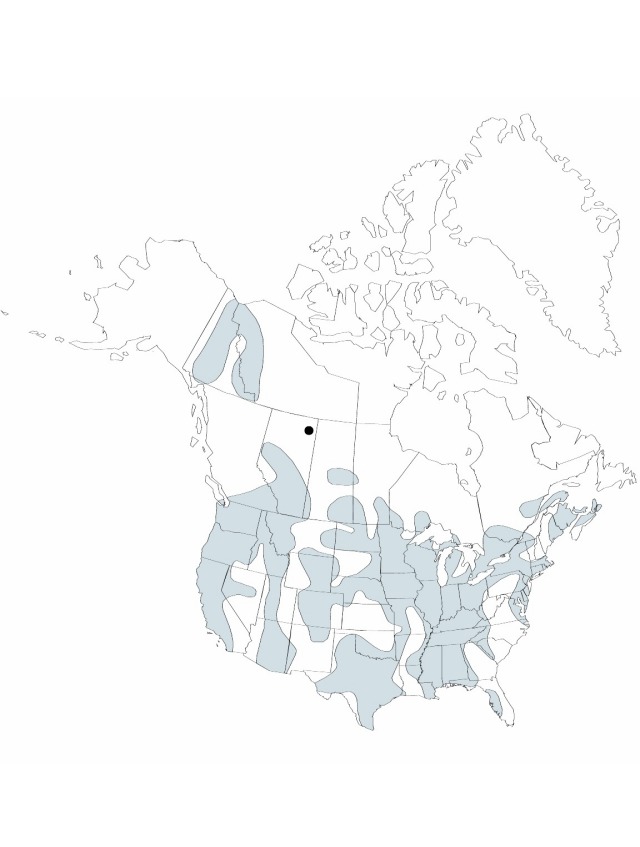Difference between revisions of "Potamogeton pusillus subsp. pusillus"
FNA>Volume Importer |
FNA>Volume Importer |
(No difference)
| |
Revision as of 19:02, 24 September 2019
Leaves: stipules connate; blade 1.4–6.5 cm × 0.5–1.9 mm, apex acute or rarely apiculate, rarely with bristle, lacunae present or absent, 0–2 rows each side of midrib; veins 1–3. Inflorescences: peduncles 1–3 per plant, filiform to cylindric; spikes cylindric, interrupted. Fruits obovoid, sides centrally concave; beak toward adaxial edge, rarely median. 2n = 26 (Eurasia).
Phenology: Flowering and fruiting spring–fall.
Habitat: Streams, lakes, or marshes
Elevation: 0–3300 m
Distribution

Alta., B.C., Man., N.B., N.W.T., N.S., Ont., P.E.I., Que., Sask., Yukon, Ala., Ariz., Ark., Calif., Colo., Conn., Del., D.C., Fla., Ga., Idaho, Ill., Ind., Iowa, Kans., Ky., La., Maine, Md., Mass., Mich., Minn., Miss., Mo., Mont., Nebr., Nev., N.H., N.J., N.Mex., N.Y., N.C., N.Dak., Ohio, Okla., Oreg., Pa., R.I., S.C., S.Dak., Tenn., Tex., Utah, Vt., Va., Wash., W.Va., Wis., Wyo., South America, Eurasia, Africa.
Discussion
Potamogeton pusillus subsp. pusillus is nearly worldwide. When it is in fruit, the inflorescence is interrupted. That character combined with its narrow, linear, 1–3-veined leaves makes this taxon easily recognized. The nodal glands are green, essentially the color of the stems. Often appearing only as bumps on the stem at the nodes, they are difficult to see. Also, because the glands frequently occur at only a few nodes per plant, one can easily overlook them.
Selected References
None.